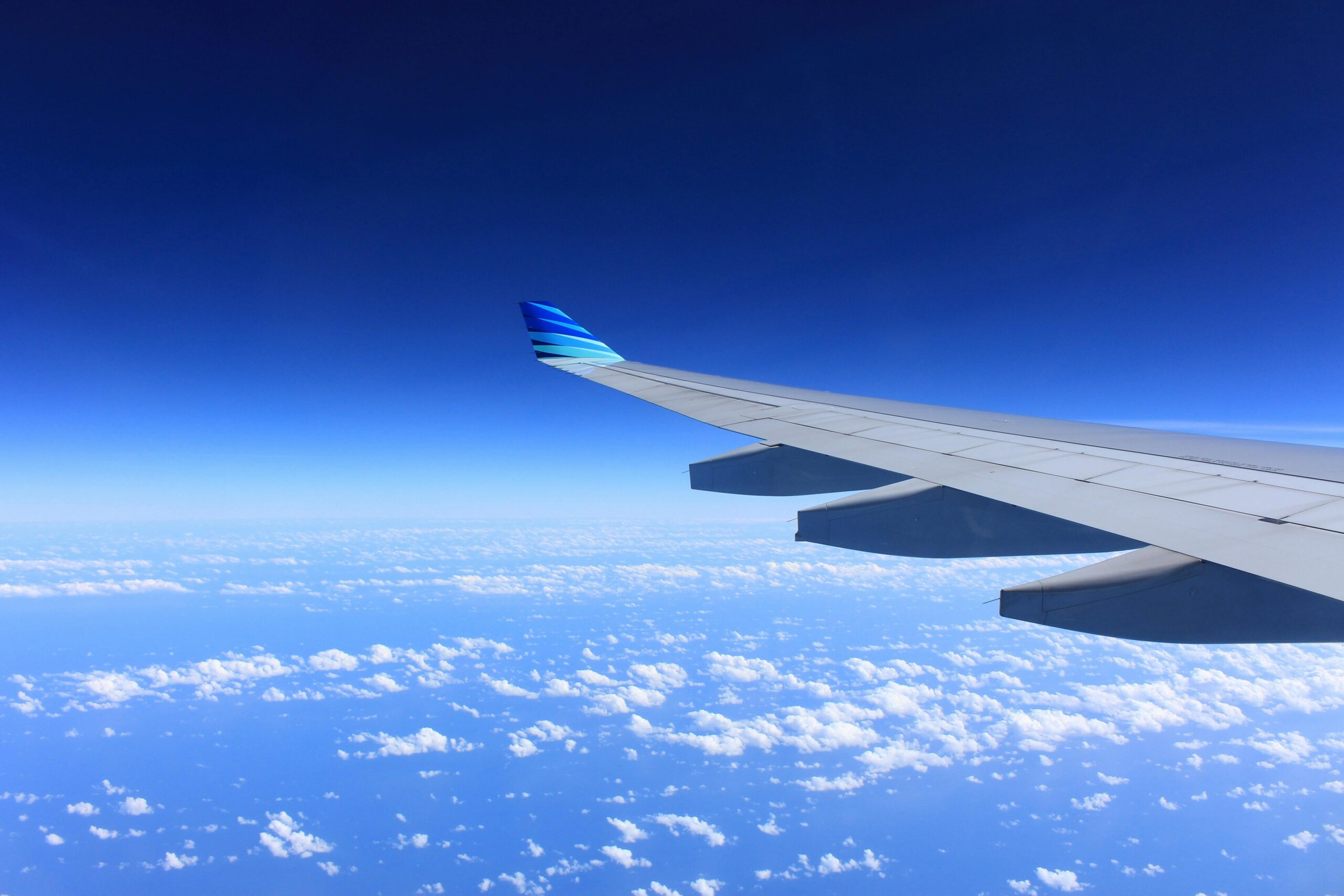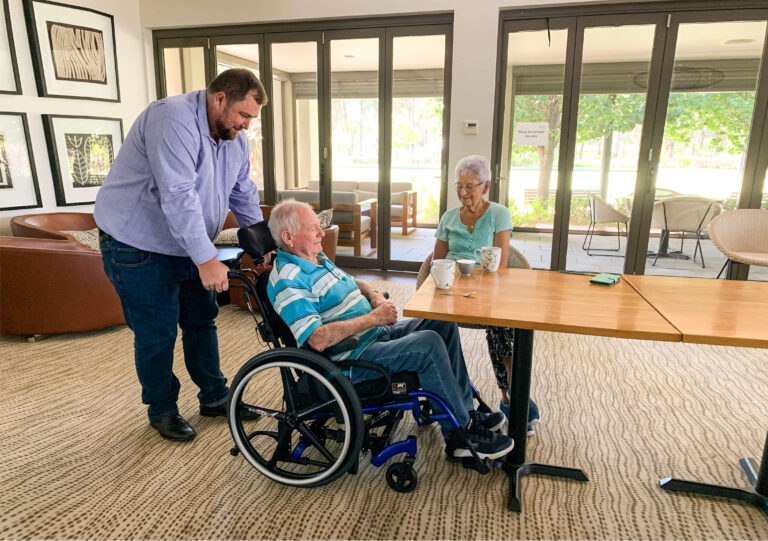As a wheelchair user, and someone who often finds himself 30,000 feet above the ground, I am thankful for the protections provided by legislation – like the Air Carrier Access Act (ACAA) which prevents airlines from discriminating against passengers with disabilities. However, despite the protections included in the ACAA, I have experienced my fair share of travel challenges.
Fortunately, after years of lost luggage, missed connections, and security line frustrations, I have learned a thing or two about flying with a mobility impairment and now hope to pass along a few tips and tricks to you.
Booking
Most air carriers offer disability options when booking a flight online. Before submitting your payment, make sure that you have made any selections describing your specific situation (power chair, manual chair, assistance needed to and from gate, etc). Additionally, for reasons detailed below, when booking travel that includes a connecting flight, it is appropriate to ensure at least an hour between your initial flight’s scheduled arrival and your connecting flight’s scheduled departure.
If disability options are not readily available online, either call the airline instead of booking online, or call the airline after receiving your confirmation number. The importance of clearly communicating your needs cannot be overstated, and doing so completes the first step toward ensuring that things run smoothly once arriving at the airport.
Packing
Packing light can be a challenge for anyone when traveling, able-bodied and those living with a disability. Unfortunately, those of us traveling with disabilities often lose precious suitcase room to medical supplies and other disability related items. These added supplies sometimes make packing more than one bag unavoidable. Keep in mind that learning to balance the need to pack light with ensuring that you have more than enough supplies to make it through your trip occurs with experience. After years of traveling solo, I’m finally getting the hang of it, but would encourage the occasional traveler to err on the side of caution and practice being more safe than sorry. With that in mind, pack what makes you comfortable and attempt to seek out airlines that charge minimal or no baggage fees.
Additionally, it is important to pack a small carry-on bag (I use my everyday wheelchair backpack) that includes all essential items. Medications, identification, and enough urological or daily use supplies to make it through two days of your trip is generally a good idea. As a side note, while preparing for your trip on day of travel, it may be wise to avoid your morning cup of coffee or daily energy drink. Though restrooms are readily available throughout the airport, an overactive bladder can make for an uncomfortable flight.
Parking
As we are all aware, locating barrier-free parking can be a challenge in locations as laid back as your local grocery store. Throw in a few thousand antsy travelers scrambling for space at a busy airport, and abuse of accessible parking is sure to be even more prevalent. Further complicating matters, parking near the terminal is typically expensive, sometimes prohibitively so. A less expensive alternative often exists in satellite “park and ride” lots provided either by the airport or private companies. Utilizing these lots is often half the cost of parking in the primary lots and shuttles to and from the airport terminals are required to be accessible. However, if making use of a satellite lot, be sure to arrive an extra 30 minutes or so on top of the otherwise recommended two hours prior to your scheduled departure. This added time will help to account for several shuttle stops at pick-up points and terminals along the way.
Check-In
At time of check-in, proceed directly to your air carrier’s ticket counter. Though it may seem obvious to most, be sure to let the counter agent know that you are traveling with your own personal wheelchair. Although most agents will ask after being notified of your chair, this is a good time to state your need for assistance boarding the aircraft. At this time, the counter agent may or may not pick up the phone and notify the mobility assistance crew that a passenger on your flight, sometimes identifying you specifically by name, will require assistance. Once checked in, you’ll also have the option of checking your bags. As someone who travels with both a suitcase (large or carry-on size depending on the duration of travel) and a small, folding shower chair, I typically choose to check my bags with the exception of the previously encouraged essential-filled backpack. This eliminates the need to fumble with baggage while passing through security, in restrooms, or while relaxing prior to your flight. However, as previously stated, some airlines charge for checked bags and luggage is occasionally lost in transit. For these reasons, I would advise you to take the time to weigh the pros and cons of checking your bags prior to arrival at the airport.
Security
Be sure to consolidate as many of your loose personal items as possible into your carry-on bag. Keys, sunglasses, cell phones, wallet, and identification (once you have passed by the initial ID checking TSA agent) should all be placed inside your bag prior to sending it down the conveyor belt and through the security scanner. This serves two purposes. First, the fewer loose items you have on your person, the less chance items will become lost. Second, after your belongings pass through the scanner, you will not be allowed to retrieve your items from the other end of the scanner on your own. For security reasons, your bags will be retrieved by a TSA agent and brought to you in the area where the final security check will occur.
At this time, you will be assigned a TSA agent of the same sex for a more involved security check of your person and wheelchair. You will then be given the option of either a private or semi-public check. Your chair will be examined as you remain seated, and you should be prepared for your entire body to be inspected using the back side of the TSA agent’s hands. Unfortunately, this is required and cannot be avoided unless you are a participant in the TSA Pre-Check program. If TSA Pre-Check approved, only your hands and chair will be inspected and the near full body pat-down will be avoided. After the pat-down has occurred, dry swabs of your chair and hands will be taken and tested. This process will take just a few seconds and will complete your TSA screening unless prohibited items have been found. You will then be allowed to take possession of your security scanned belongings and will be free to proceed on to your gate.
Gate
The gate portion of your airport experience is often the most critical to the success of your travel. Once the air carrier agent arrives at your assigned departure gate, proceed to the counter and make sure your presence is known to the gate agent. Though the original ticket counter/check-in agent may have called ahead to let the gate know that assistance will be required, staff may have changed, or communication wires may have been crossed. Be sure to restate your needs and ask that your wheelchair be tagged for retrieval at your arrival gate.
After touching base with the gate agent, this may be a good time to consider bladder management concerns. Though some aircraft (depending on size) may be equipped with small aisle chairs that may be used for transport to and from the restroom in flight, using the aircraft lavatory may not be a realistic option. For this reason, proper bladder management practices are key. With the understanding that passengers requiring assistance are always boarded prior to the general population and typically 30 minutes pre-flight, I tend to use the restroom 40-45 minutes prior to scheduled departure. This ensures maximum time between required catheterizations. For flights scheduled to last more than 2 hours, I often utilize an indwelling catheter and collection bag while in transit with removal once I have reached my destination. Though this is what I have found to work for me personally, be sure to consult your physician and/or urologist about what would be the most appropriate option for your needs.
Boarding
As previously stated, you will usually be boarded 30 minutes prior to scheduled departure. Your ticket will be scanned, and you will be allowed to proceed down the jet way (with any companions who may be traveling with you) toward the aircraft. At this time, you will either transfer yourself or be transferred by airport personnel into the small aisle chair that will accommodate passage down the aircraft’s aisle. Be prepared for the unfortunate fact that this aisle chair is extremely narrow and will nowhere near match the comfort or stability of your personal wheelchair. Once safely in the aisle chair, you will be strapped in at the chest, shoulders, thighs, and feet. During this part of the process, communication is key. If there is a specific way you would like to be assisted, do not be afraid to make specific requests. If you become uncomfortable with how you are being assisted, make the transfer assistants aware. You are your best advocate.
At this point, either ask those traveling with you or the airline staff to remove any loose items from your chair. Seat cushions, backpacks, and removable side guards should be removed from manual chairs and brought inside the cabin. Seat cushions, headrests, lateral and thigh supports and basically anything fragile and easily removable without tools should be removed from power wheelchairs. If there are multiple items being removed, consider bringing a small, empty duffel bag to contain these items and prevent them from being lost. If you have specific directions for how you would like your chair to be handled, be sure to relay those instructions to the airline staff. Some travelers choose to print out directions and tape them to the chair. If your equipment needs are especially complex, this may be a good idea.
Two agents will then move you down the aisle backwards and to your seat. Depending upon the length of your flight and your own personal skin integrity, you may choose to sit on your wheelchair cushion instead of directly on the airplane seat. If able to transfer independently, you will be given the opportunity to do so. If requiring assistance, the staff provided will assist you. Transfer assistance ranges from minimal assists involving no more than the steadying of one’s chair to full assists utilizing either slings or two person lifts. Again, if you are uncomfortable or uneasy about the way you are being assisted, it is your responsibility to speak up.
Arriving at your destination
Once the aircraft has landed, be prepared to wait, as you will be the last person off the plane. If you have a time sensitive connecting flight, this may be a good time to remind the flight attendant of your timeline and ask if there is anything that can be done to ensure a speedy transition. The deplaning portion of your experience will be incredibly similar to the onboarding portion of your flight, only in reverse and with new staff to assist. Again, do not assume that any of your needs or concerns have been communicated to your destination staff, and be sure to take the time to fully relay any information you feel is important to those assisting you.
By the time you are taken off of the plane, your chair should be waiting for you at the bottom of the jetway. After your chair has been reassembled and your personal items have been collected, you will be free to proceed up the jetway and toward the terminal. As a caution to even the most experienced manual chair user, be careful pushing up the jetway! Added weight in your carry-on and the steep angle of the jetway ramp can make for a tippy wheelchair.
Because of the fact that you were last to deplane, you may arrive at the luggage carousel to find that your bags are nowhere to be found. Often, these bags have simply been moved by airport staff and can be collected near the luggage office which is typically situated near the carousel area.
Finally, prior to leaving the airport, it would be wise to carefully inspect your chair for damage acquired in transit. If damage has occurred, notify airline personnel and contact the Numotion Customer Care Center toll-free at 800-500-9150. With over 130 locations nationwide, we may very well have a location near your destination and would be happy to assist.
Though air travel as a wheelchair user can sometimes be frustrating, those of us requiring the use of mobility devices should not allow those frustrations to prohibit the joys of discovering new places, people, and experiences. With a little preparation and a lot of communication, your air travel experience can be no more frustrating than that of the average frequent flyer.
* I should note that for some manual chair users with relatively minimal seat widths (approximately 16″ or less), Southwest Airlines planes are configured in a way that may allow you to avoid the aisle chair altogether. Because Southwest does not assign seats in advance and since you are boarded first, you are free to sit in the front row of the plane, which is usually accessible in your personal chair.

author
Justin Richardson
Executive Director of The Numotion Foundation



